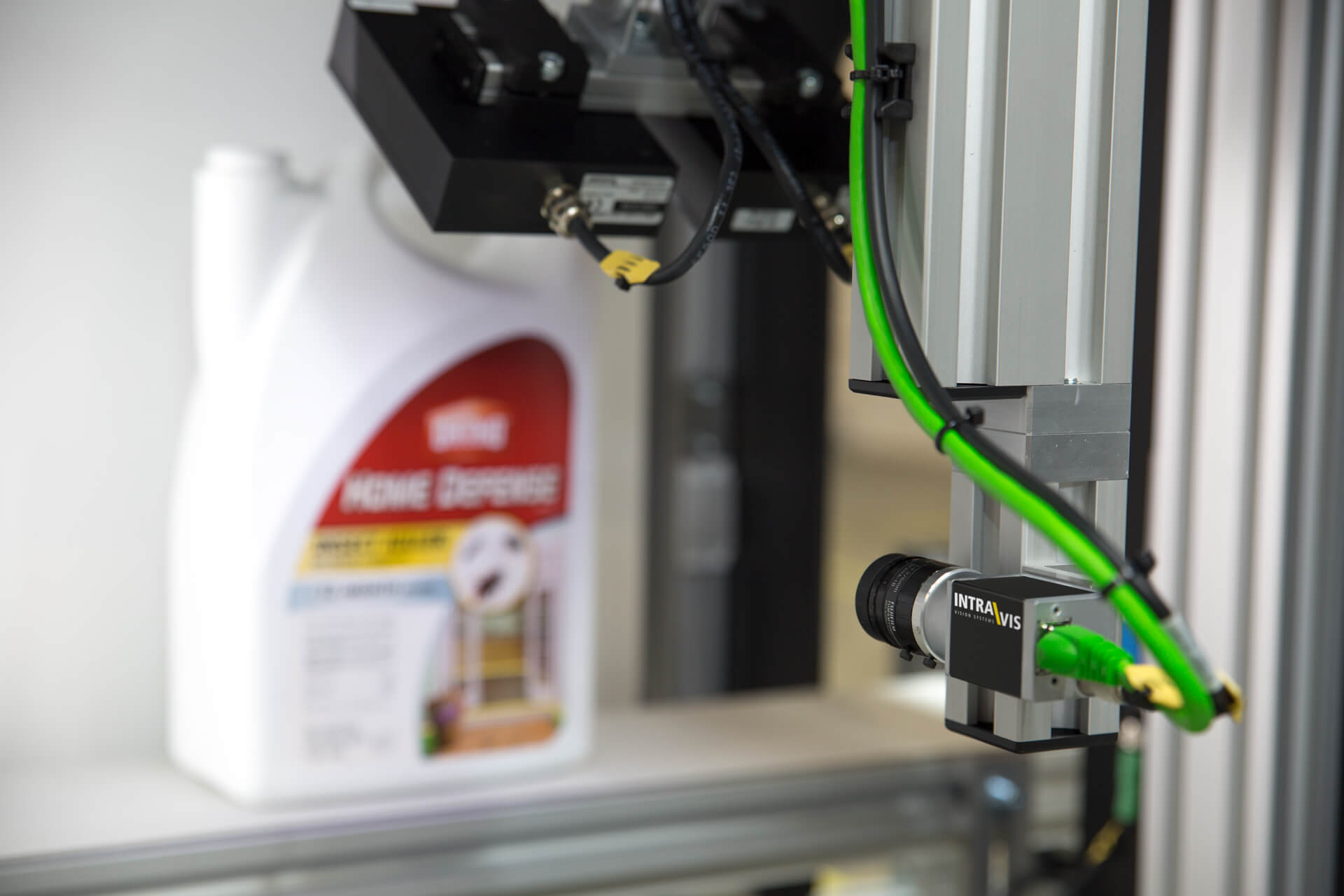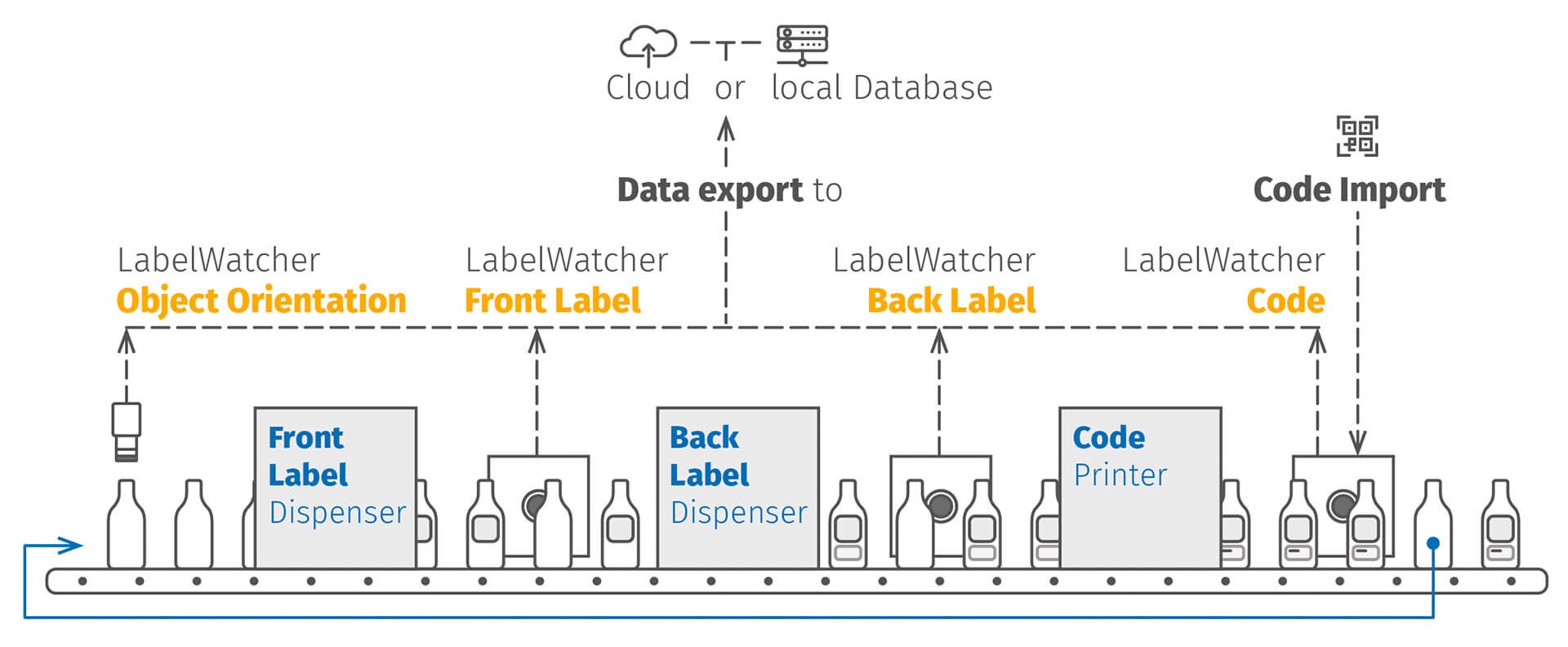Industry 4.0 solutions find their way into the labeling process

The times in which inspection systems only sort out defective products are definitely over. With the introduction of more and more digital interfaces in everyday production, inspection systems are increasingly responsible for smooth and efficient processes. This does not even stop at the labeling processes.
The application of Industry 4.0 solutions in the labeling process is very much dependent on the use of vision inspection systems like the ones of INTRAVIS. The measurement results of these quality inspection systems are the data basis for all decisions in a cutting-edge labeling line. Essentially, there are three possible applications: data export, data import and connection to other machinery.
Data export
This is certainly the simplest and still the most widespread use of vision inspection systems in the labeling process. The system, which is integrated into the production line, collects a multitude of quality data for each object passing through and transmits this data into an on-premise database or into a cloud. Defective objects are sorted out immediately. The LabelWatcher, for example, inspects all applied labels for up to 180,000 objects per hour and delivers a wide range of inspection results for key parameters for each label.
This data offers insights for different interest groups. On one hand, the quality laboratory gains information about the quality of the respective production line. On the other hand, the plant management gets more insights about the efficiency of production lines, shifts and is able to compare and challenge whole production facilities. In addition, these datasets are used to provide customers comprehensive reports on the quality of the respective delivery.
Data import
While the classical flow of data leads out of the inspection unit, the trend of importing data into the inspection system has increased significantly in recent times. In particular, codes that appear for a specific product or batch play a major role in the process of data import. Here, the inspection system performs a com
parison of an applied code with the codes in a database. Only if the codes match, the products are further processed and released for shipping.

Interaction with processing machinery
Furthermore, vision inspection systems matter increasingly as a control unit in an automated labeling process. This kind of application promises immediate efficiency enhancements and a rising production line productivity. Three different application types can be distinguished as inspection solutions:
1. Feedback to labeling machine
The logic behind this is simple: The vision inspection system determines whether or not an offset of the label to a pre-defined optimal position exists. If so, the system sends the offset value directly to the labeling machine. Based on this value, the labeling machine adjusts the dispensing head to the right or left or up or down.
The LabelWatcher has for such situations a special highlight to offer, as Klaus Schönhoff, CTO of INTRAVIS, outlines: ”Our LabelWatcher can not only cope with one but with two different dispensing heads. So in case the same label is applied by different heads, we can easily redirect the offset value to the specific dispensing head.” This feature secures, that always the right head is adjusted with its corresponding offset value.
This solution can be implemented in cooperation with both linear and rotary labelers. INTRAVIS has already been using such applications, for example at a German global player since 2018.
2. Prevention of product refinement
With this type of application, the whole labeling process is distributed over several stations. At a first station, for example, a front label is attached by a dispensing head, at a second station a back label is applied and at a third station a code is engraved. An inspection unit can be integrated after each of the stations to check that all important parameters are correct. If one of the first two inspection stations detects an intolerable deviation, the further finishing steps (i.e. station two and/or three) are deactivated for the defective object. This prevents further processing of a faulty object and simplifies the recycling process of it and saves material.
3. Correction of object orientation
While in the first two applications the inspection station is integrated after each processing step, this application is used before the actual labeling process. The inspection unit determines the orientation of an object with regard to the necessary object orientation for the labeler or printer. If a faulty orientation is detected, further processing at subsequent labeling stations is de-activated and the object is sorted out for reutilization.
Why an inspection system makes sense
The most important advantage is obvious: to avoid the further processing of already faulty objects. The earlier a defective product is recognized in the production process, the less effort and material is invested in it. Producing faulty products can also be avoided if the label dispensing head is permanently and automatically readjusted as described above. All this ideally happens without any manual intervention. Thus, employees have more time to accomplish other tasks in the company.
With most of these applications implemented in the recent years, we have proven that vision inspection systems for labels as well as for closures, preforms, bottles and containers are more than just sorting out units.